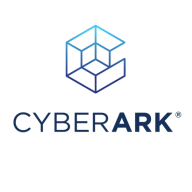


CyberArk Identity and JumpCloud compete in the identity and access management space. CyberArk Identity holds an edge due to its deeper integrations and expansive security features, while JumpCloud is praised for its user-friendly deployment.
Features: CyberArk Identity provides comprehensive security features like password rotation, advanced access control, and integration with tools such as UiPath Orchestrator and Splunk. It excels at securing privileged accounts and offers robust integration capabilities. JumpCloud is noted for its strong SSO and MFA features, integration via SAML 2.0, and centralized application management. The system is adaptable, with capabilities in device management and directory deployments.
Room for Improvement: CyberArk Identity could improve its UI, scalability, and third-party tool integration. Enhancing federation capabilities and governance functions would be beneficial. JumpCloud needs to enhance MDM capabilities and Microsoft 365 synchronization, while offering better device control and API improvements. Its interface could be more intuitive and customizable to meet diverse needs.
Ease of Deployment and Customer Service: CyberArk Identity offers flexible deployment models including on-premises and hybrid options, though this complexity makes setup more challenging. Their technical support is responsive but needs more expertise. JumpCloud, focusing on public cloud deployment, simplifies setup and receives high support ratings, though faster resolution times are desired. Both solutions strive to meet support needs, with user experiences influenced by deployment complexity.
Pricing and ROI: CyberArk Identity is expensive but valued for its security features, requiring significant upfront investment with cost-saving risk mitigation. JumpCloud offers budget-friendly, subscription-based pricing, benefiting smaller organizations through elimination of traditional hardware costs. While JumpCloud's pricing has increased, its model is competitive, with both products highlighting ROI through security and efficiency improvements.
I have seen over 30% return on investment due to the improvement in operational efficiencies through automation, which enhances productivity.
We've seen a return on investment of more than 100% over the past two to three years.
We do not contact their technical support directly because we have a service agreement already in place with them with some dedicated and some non-dedicated resources.
They resolved the problem immediately after I reported it, on the same day, within one hour.
They respond immediately when requests are raised, and they are always available for priority one tickets.
I would rate technical support for CyberArk Identity a nine out of ten because they are professional, knowledgeable, and resolve queries efficiently when needed.
I have not needed to contact JumpCloud's technical support since the setup and usage are quite straightforward and well-documented.
We can use it on different phones and computers, demonstrating its scalability.
CyberArk Identity is scalable as needed, but increasing resources affects overall costs.
CyberArk Identity is definitely a scalable solution; it all depends on the money that you have, as with anything else.
With AWS SSO, it is ten out of ten.
We no longer have our data infiltrated by unauthorized persons, and tracking actions within the system has become very easy.
When you have it in the cloud, you have CyberArk every time you need it.
With a stable network, due to the redundant data centers across the globe, it is a lot easier to use as a SaaS solution.
I rate the stability of JumpCloud ten out of ten.
The biggest issue, which is the reason why we are transitioning from their product to SailPoint, is the overall user experience.
Integration or deployment is extremely difficult for CyberArk Identity.
There's a need to enhance network performance.
For CyberArk Identity, you need knowledge of their scripting language to pull different sets of reports.
This would be helpful, especially for AWS users, by providing broader support for different cloud platforms and private cloud environments.
They are lower than some of their competitors.
Regarding pricing, it can be quite a lot for small companies.
The pricing is acceptable.
If I am not going fully cloud, there are additional resources I will need to purchase, such as spinning more VMs or acquiring an HSM device to encrypt the vault.
AWS charges per user, which can be costly if I have more than ten users.
Technically, the product does everything one would expect from an identity and access management platform.
It impacts zero trust security strategies. It prevents lateral movements in the organization.
CyberArk Identity is a great solution for overall security posture and privileged identity controls because it has a strong base in securing privileged access and managing identities within our environment.
It is the most powerful access management system.
The most impactful feature of JumpCloud is that it allows me to use one credential for all platforms or accounts, reducing the need to remember multiple credentials.
| Product | Market Share (%) |
|---|---|
| Omada Identity | 3.1% |
| CyberArk Identity | 2.2% |
| JumpCloud | 1.1% |
| Other | 93.6% |



| Company Size | Count |
|---|---|
| Small Business | 8 |
| Midsize Enterprise | 3 |
| Large Enterprise | 41 |
| Company Size | Count |
|---|---|
| Small Business | 19 |
| Midsize Enterprise | 4 |
| Large Enterprise | 9 |
| Company Size | Count |
|---|---|
| Small Business | 13 |
| Midsize Enterprise | 2 |
| Large Enterprise | 3 |
Omada Identity is an identity governance and administration (IGA) solution designed to help organizations manage and secure digital identities and access across their IT environments. It focuses on enhancing security, compliance, and efficiency by automating identity management processes.
Omada Identity offers a robust set of features that streamline identity lifecycle management, access governance, and compliance reporting. It integrates with a wide range of IT systems, applications, and data sources, providing a centralized platform for managing user identities and access rights. The solution enables organizations to enforce security policies, ensure regulatory compliance, and reduce the risk of unauthorized access.
What are the critical features of Omada Identity?
What benefits or ROI items should users look for in the reviews when evaluating Omada Identity?
Omada Identity is widely adopted across various industries, including healthcare, finance, and manufacturing. In healthcare, it helps protect patient data and comply with regulations like HIPAA. In finance, it ensures compliance with SOX and other financial regulations. In manufacturing, it secures access to sensitive production data and intellectual property.
Pricing and licensing for Omada Identity are typically based on the number of users and the specific features required. Customer support is available through various channels, including online resources, support tickets, and professional services for implementation and customization.
In summary, Omada Identity is a comprehensive IGA solution that enhances security, compliance, and efficiency in managing digital identities and access.
CyberArk Identity is a versatile identity management solution suitable for a wide range of enterprises. It is designed to enhance enterprise security and improve user experience. Its focus on security, compliance, and operational efficiency, combined with positive user feedback, makes it a strong contender in the identity management space.
CyberArk Identity offers a robust suite of features to manage user identities and access privileges. It focuses on securing access to resources across various environments, including cloud and on-premises applications. Its capabilities include single sign-on (SSO), multi-factor authentication (MFA), lifecycle management, and privileged access management. These features are engineered to streamline access control, enhance security, and ensure compliance with regulatory standards.
According to our user interviews, CyberArk Identity is praised for its reliability and user-friendly interface. IT professionals highlight the ease of integration with existing systems, while business executives appreciate the visibility it provides into access and identity management across the organization. Users also commend the responsive customer support, which is crucial for enterprise-level solutions.
IT Professionals found that CyberArk Identity's focus on multi-layered security significantly reduced the risk of data breaches and unauthorized access. With a centralized dashboard and automation features, you can streamline identity and access management tasks, saving time and reducing complexity. Finally, it helps meet various compliance requirements.
JumpCloud offers efficient device management, single sign-on, and integration capabilities. It integrates seamlessly with Microsoft 365 and Google Workspace, streamlining user management across diverse environments.
JumpCloud delivers device, user, and application management across platforms like Windows, Mac, Linux, and cloud services such as AWS and Azure. Acting as a cloud-based directory, it facilitates single sign-on and identity access management, making it an attractive replacement for Active Directory and LDAP directories. Its policy management and centralized directory simplify user and device administration, offering a user-friendly interface with flexible access control and remote management. Organizations can experience streamlined onboarding and offboarding processes, robust authentication, and scalability. Despite being powerful, room for improvement is noted in alert capabilities, comprehensive MDM for Windows, multi-tenant features, and API reliability.
What are the key features of JumpCloud?Companies across industries utilize JumpCloud for comprehensive management of devices and user identities. It is especially beneficial in technology-driven sectors where centralized directory services replace traditional Active Directory and LDAP models. Organizations employing platforms like AWS and Azure find it essential for maintaining efficient and secure access management.
We monitor all Identity Management (IM) reviews to prevent fraudulent reviews and keep review quality high. We do not post reviews by company employees or direct competitors. We validate each review for authenticity via cross-reference with LinkedIn, and personal follow-up with the reviewer when necessary.